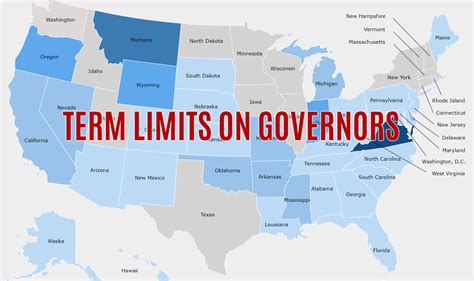The concept of term limits for elected officials, particularly for the position of Governor in California, has been a topic of discussion and debate for many years. The idea behind term limits is to prevent the concentration of power in the hands of a few individuals, promote fresh perspectives, and ensure that elected officials remain accountable to the people they serve.
In California, the Governor serves as the chief executive of the state, responsible for executing the laws and overseeing the various departments and agencies of the state government. The Governor is elected by the people of California to a four-year term, with a limit of two terms. This means that a Governor can serve a maximum of eight years in office.
The term limit for California Governors was established by a voter-approved initiative in 1990, which amended the California Constitution to include the provision. The initiative, known as Proposition 140, was designed to prevent Governors from serving for extended periods of time and to reduce the influence of special interest groups.
The term limit for California Governors has both pros and cons. On the one hand, it can help to prevent the abuse of power and ensure that new ideas and perspectives are brought to the office. It can also help to prevent Governors from becoming too comfortable in their positions and losing touch with the needs and concerns of their constituents.
On the other hand, term limits can also have negative consequences. For example, a Governor who is limited to two terms may feel less inclined to take on long-term projects or make difficult decisions, knowing that they will not be in office to see the results. Additionally, term limits can lead to a lack of continuity and stability in government, as new Governors may have different priorities and policies.
Despite these potential drawbacks, the term limit for California Governors remains in place. In recent years, there have been efforts to modify or repeal the term limit, but so far, these efforts have been unsuccessful.
One of the key arguments in favor of term limits is that they can help to prevent corruption and the abuse of power. When elected officials are limited to a certain number of terms, they are less likely to become entrenched in their positions and more likely to be accountable to the people they serve.
Another argument in favor of term limits is that they can help to promote diversity and representation in government. By limiting the number of terms that an elected official can serve, term limits can create opportunities for new candidates and perspectives to emerge, which can help to ensure that government represents the diverse needs and interests of the people.
However, there are also arguments against term limits. Some argue that term limits can lead to a lack of experienced and knowledgeable leaders in government, as elected officials are forced to leave office after a certain number of terms. Others argue that term limits can limit the ability of elected officials to develop and implement long-term policies and projects.
In California, the term limit for Governors has had a significant impact on the state’s politics and governance. For example, the term limit has led to a number of changes in the way that the Governor’s office operates, with a greater emphasis on short-term goals and initiatives.
The term limit has also led to a number of challenges for Governors, who must balance the need to achieve their policy goals with the limited time that they have in office. This can be particularly challenging for Governors who are elected to a second term, as they must navigate the complexities of the state’s budget and policy landscape while also preparing for the transition to a new administration.
In conclusion, the term limit for California Governors is a complex and multifaceted issue, with both pros and cons. While term limits can help to prevent the abuse of power and promote fresh perspectives, they can also lead to a lack of continuity and stability in government. As the state of California continues to evolve and grow, it is likely that the debate over term limits will continue to be an important part of the state’s political landscape.
One of the key challenges facing Californians is balancing the need for experienced and knowledgeable leaders in government with the need to prevent the abuse of power and promote fresh perspectives. This can be achieved through a combination of term limits and other measures, such as campaign finance reform and increased transparency in government.
By taking these steps, Californians can help to ensure that their state’s government is accountable, responsive, and effective, while also promoting the values of diversity, representation, and good governance.
What is the term limit for California Governors?
+The term limit for California Governors is two terms, or eight years.
Why was the term limit for California Governors established?
+The term limit for California Governors was established to prevent the concentration of power in the hands of a few individuals and to promote fresh perspectives in government.
How has the term limit for California Governors impacted the state's governance and politics?
+The term limit for California Governors has led to a number of changes in the way that the Governor's office operates, with a greater emphasis on short-term goals and initiatives. It has also created opportunities for new candidates and perspectives to emerge, which can help to ensure that government represents the diverse needs and interests of the people.
In the end, the term limit for California Governors is a complex issue that requires careful consideration of the pros and cons. By understanding the implications of term limits and taking steps to promote good governance, Californians can help to ensure that their state’s government is accountable, responsive, and effective.
As Californians continue to navigate the complexities of their state’s government, it is essential that they stay informed, participate in the democratic process, and support efforts to promote transparency and accountability in government. By doing so, they can help to ensure that their state’s government is truly of the people, by the people, and for the people.



